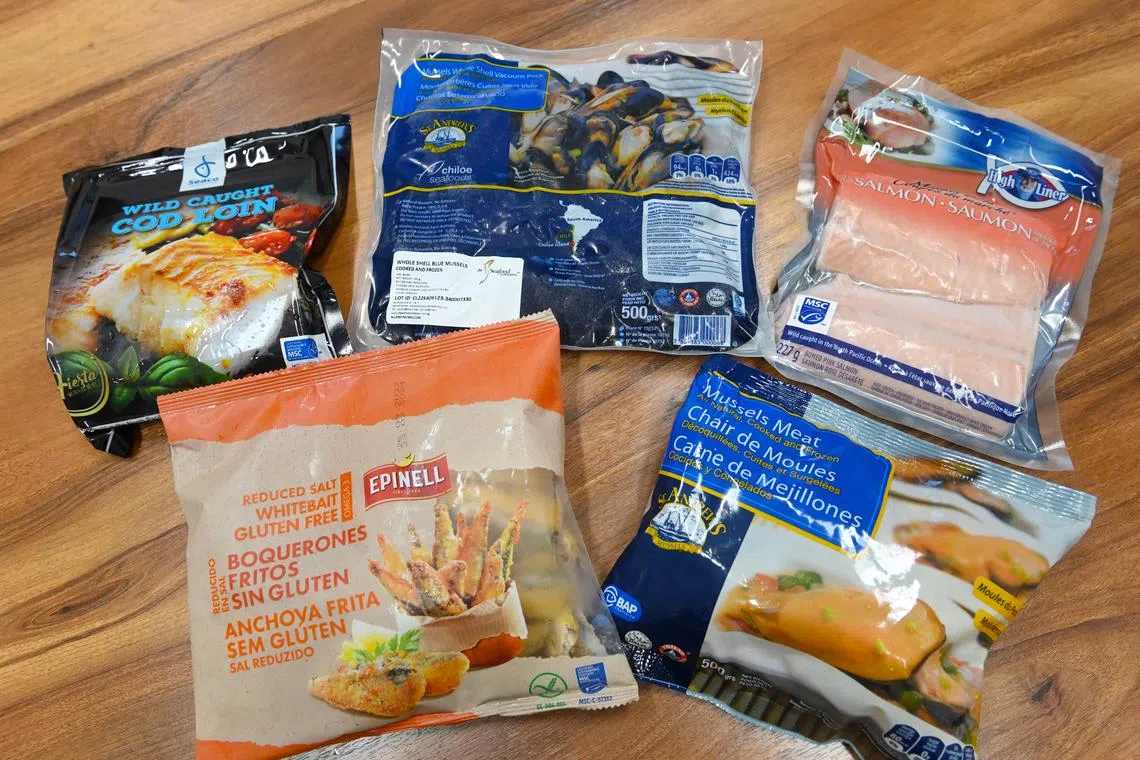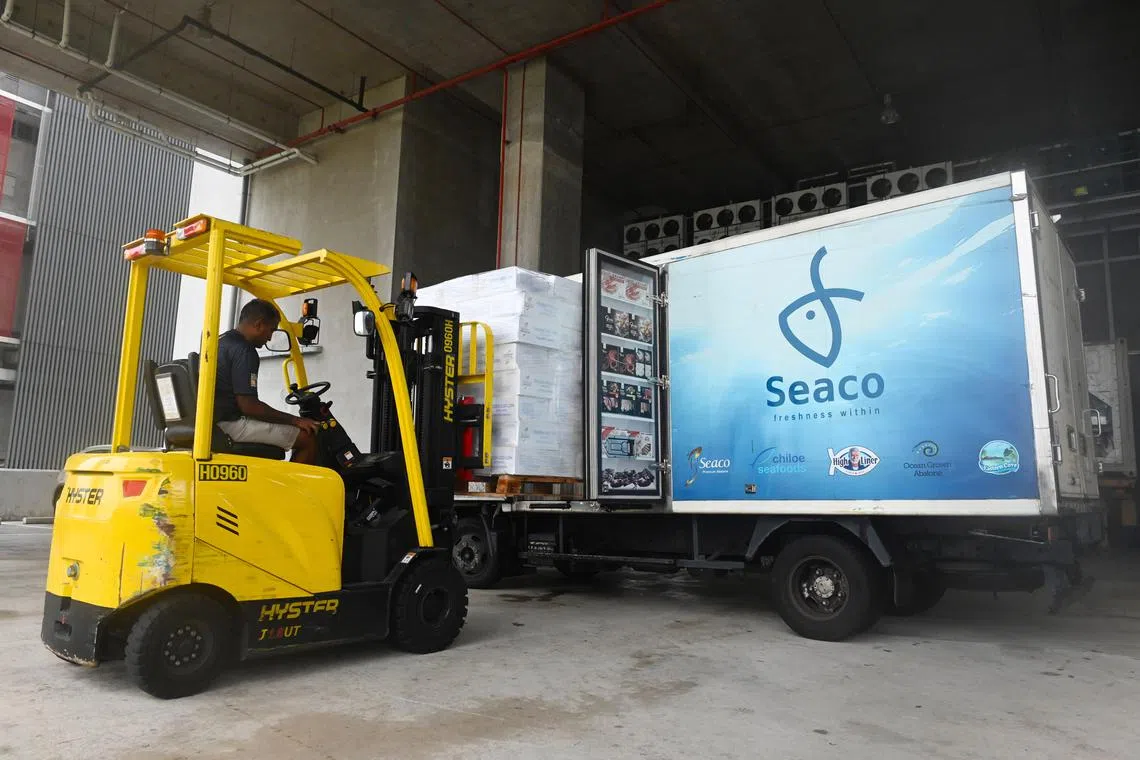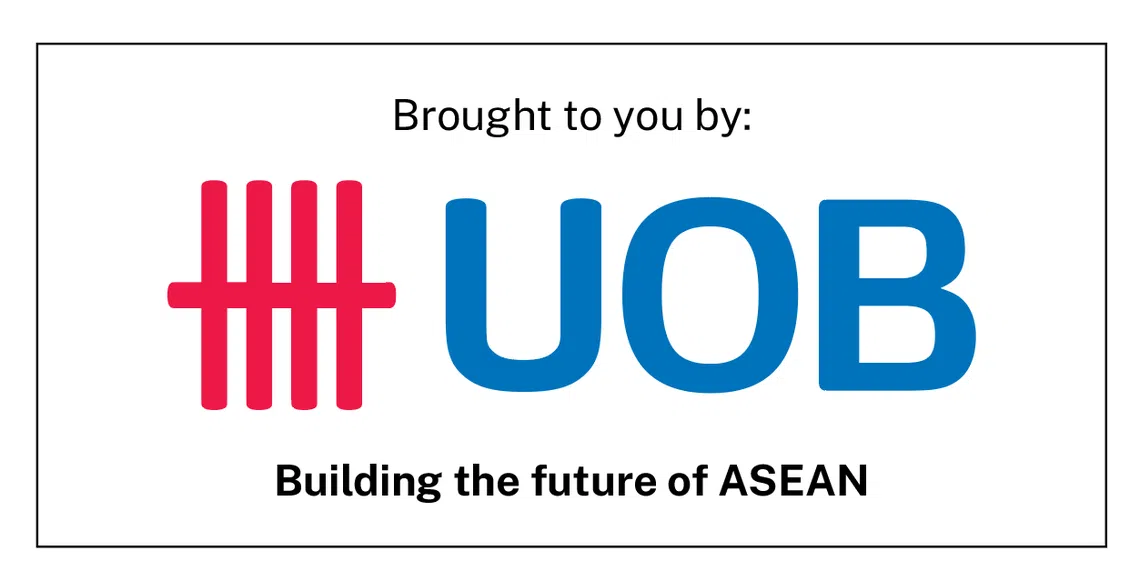The Seafood Company invests to stay cool for less
It is embracing new cooling technologies and automation to bring customers sustainably sourced and stored seafood

KEEPING temperatures down is a challenge and a significant expense for frozen food producers and suppliers, as utility costs soar.
For The Seafood Company (TSC), tapping newer technologies for cooling and embracing automation are key elements of its plan to bring costs and emissions down while seeking a more sustainable way to bring seafood to consumers.
The company – which mainly trades frozen seafood – is investing S$40 million to build a new cold room facility that makes use of technologies to reduce energy usage.
Kenneth Chia, managing director of TSC, told The Business Times that the company had contemplated building this facility – which is scheduled to be ready by mid-2025 – for some time.
“We were supposed to do this two years ago, but our warehouse crashed,” he said.
In September 2021, the foam insulation in its previous warehouse collapsed and took out the fire sprinkler. Flooding destroyed around 2,000 tonnes of seafood, or around 90 per cent of its stock.
Chia said the company has recovered from the episode and is now moving ahead with its plans.
Keeping cool
Storing seafood at minus 20 degrees Celsius in large cold storage facilities requires a significant amount of power.
“Electricity prices have more than doubled from two years ago,” Chia said. He estimates that 20 to 30 per cent of TSC’s running costs come from electricity.
This made the decision to invest in the new cold room a “no-brainer”.
The planned facility – which can store 10,000 pallets – would also employ greater automation to minimise wastage.
In a traditional cold room, workers operating forklifts have to open large doors to enter the cold area to retrieve goods.
Automating the retrieval process with machines would reduce temperature loss while improving worker productivity.
TSC is also exploring improvements in cooling technology.
Cooling systems typically use coolants such as freon and ammonia. “These gases cause negative impact to the environment,” Chia said. The new cold room uses carbon dioxide instead.
While more expensive – a carbon dioxide-powered system costs around 50 per cent more than a regular system – TSC believes the investment worthwhile, as electricity consumption is expected to be 20 to 30 per cent less.
The long-run utilities savings would reach break-even in five to seven years.
Chia noted that such cooling systems are already used in overseas markets such as Japan, but have not gained traction in Singapore. He hopes to be able to entice like-minded businesses to the new facility.
“We still have space for our other partners,” he said, adding that other players involved in products such as meat or vegetables could be interested in sharing resources.
Sustainable catch
Another focus for TSC is the source of its seafood.
“We buy, we travel, we go out and see; we know what’s happening to the resource areas,” Chia said. “We see catches are getting (smaller and smaller). The catching seasons are more erratic; it’s really serious.”
TSC began importing certified sustainable products around 13 years ago. This followed a sourcing trip to Latin America where Chia observed fishermen farming Chilean blue mussels.
“It was quite an eye-opener,” he said of the effort to make sure the product was sustainable. His brother Chia Thiam Ann – an executive director at TSC – said the company is importing “quite a number” of products certified by the Marine Stewardship Council and the Aquaculture Stewardship Council.
The former certifies fisheries that are doing sustainable harvesting, while the latter focuses on responsibly farmed seafood.
Among the TSC products with sustainability labels are salmon, prawns and Boston lobsters. Chia added, however, that non-certified products are not necessarily less sustainable, as some suppliers may not have joined the programme.
As an example, Chia pointed to seafood products from Japan: “(It’s) small little things, (such as) the nets they use to catch fishes – they purposely do it in a way that the size of the net is big enough so the ones that are too young would not be caught.”
The sustainability label alone also does not take into account the other costs and impact of bringing seafood to the table.
For instance, consumers may want to purchase certified sustainable lobsters from the United States. Yet, this may not be the greenest option when carbon footprint is also factored in. Seafood sourced within the region may have a lower environmental impact, even though they lack certification.
Chia said such considerations are still being discussed, and that the sustainable seafood segment is still developing. Both consumers and producers are still seeking the best ways to achieve sustainability.

Consumer acceptance and willingness to pay also remains a challenge.
“When we brought (the mussels) in, they cost more. We had a hard time selling them, to be honest, because prices were more expensive,” Chia said.
TSC has also recently hired a sustainability officer to help shape its direction going forward.
Chia believes clients will start to care more about sustainability. “In the very near future, I think the people who are not on it are the ones who are going to be left behind.”
The company is planning to improve sourcing standards internally, and targets to launch an environmental, social and governance (ESG) strategy for the business in a year.
Eyeing growth
Chia founded TSC in 2005 to import and distribute frozen seafood in Singapore, building upon his family’s experience in fish ball production.
When they started, the bulk of Singapore’s imported seafood was fresh and chilled. Frozen seafood made up less than 20 per cent of the country’s total import volume.
“We were telling customers who were starting to open chains that our sizes (and quality) are more consistent,” Chia said.
Today, he estimates that frozen seafood makes up around half of seafood imports.
TSC sells its seafood under the brand Seaco, and also supplies on a wholesale basis to large industry players.
“All our seafood can be found across all major chains of restaurants in Singapore,” he said, adding that the company also supplies to airlines and staff canteens.
TSC has also branched out into soft-shell crab farming and the importing of live seafood.
Around 90 per cent of its revenue comes from Singapore. It also operates out of Pakistan and Indonesia, where its business is that for a seafood exporter.
“We expect our export volume to grow tremendously in the next few years,” he said, adding that this could grow to 30 per cent of revenue.

TSC has thus far mainly operated out of leased facilities. Chia hopes the new cold room will be another growth driver.
“I’m very interested in doing collaborations with other businesses ... and that will only work when you truly own the space,” he said. “As we grow over the years, we are at this stage where we feel we are ready to organise things.”
To fund its investment in the new cold room, the company is looking to loans instead of raising capital via an initial public offering.
Eric Lian, head of commercial banking at UOB, noted that the importance of sustainability has grown, and that it has become more vital to prioritise.
“When The Seafood Company shared about their cold room project, we engaged our sector and ESG specialist teams to provide guidance on integrating sustainability and collaborate with them to simplify their access to sustainable financing,” he said.
Chia added that the company may consider tapping the public markets in future if it is looking to scale up other projects.
“We are still behaving like a young company, still growing,” he said. “When we are ready to scale, then, yes, I think that would be a good time.”
This is the final instalment in a 5-part Green Business series, in collaboration with UOB, exploring sustainability trends across businesses and industries.

Decoding Asia newsletter: your guide to navigating Asia in a new global order. Sign up here to get Decoding Asia newsletter. Delivered to your inbox. Free.
Copyright SPH Media. All rights reserved.


